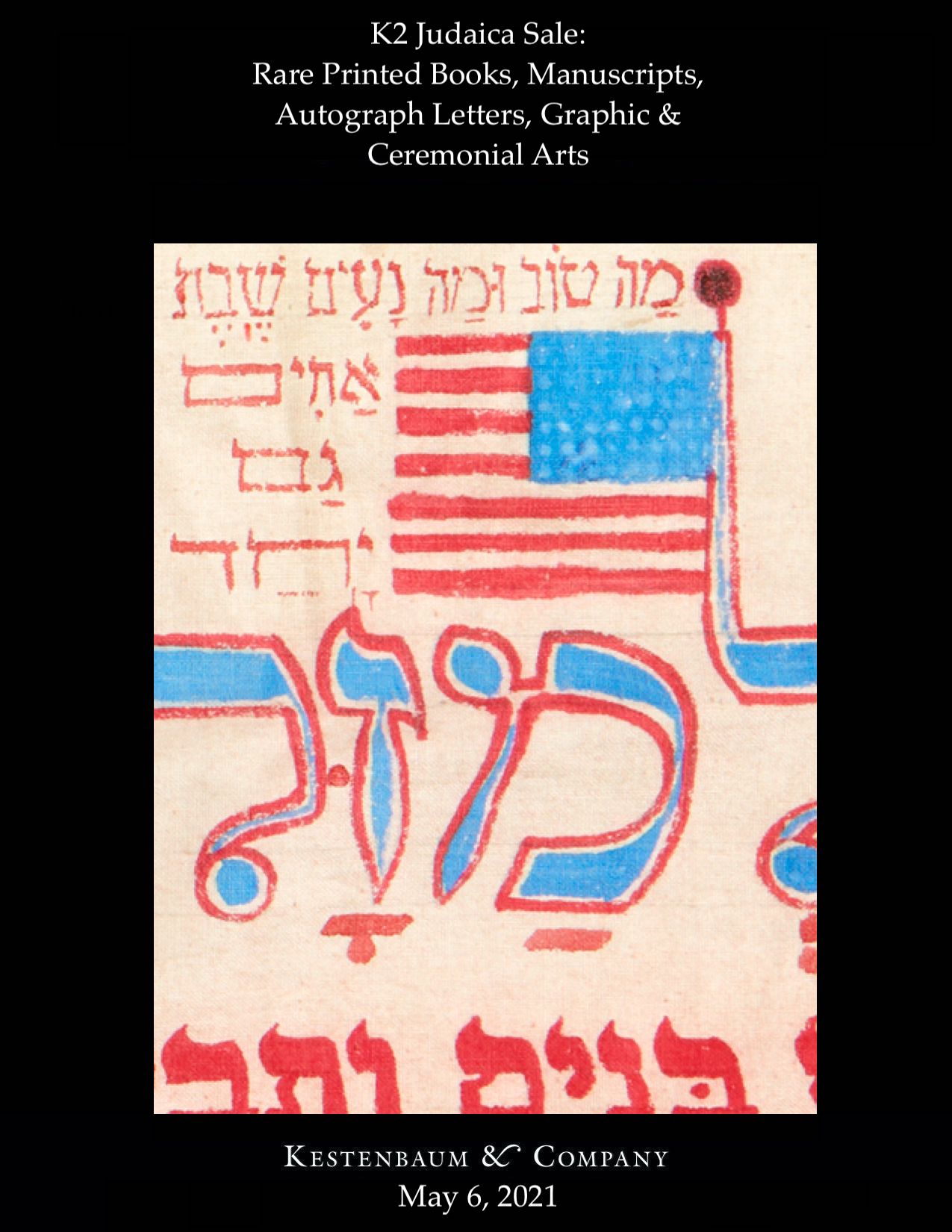Pinkas-Community Ledger: <<Hagenbach.>> Notizen Buch für die Israelitische Cultus Verwaltung Hagenbach [“The Minutes of the Jewish Congregational Board of Hagenbach.”]

Auction 93 |
Thursday, May 06th,
2021 at 1:00pm
K2 Judaica Sale: Rare Printed Books, Manuscripts, Autograph Letters, Graphic & Ceremonial Arts
Lot 5
(GERMANY).
Pinkas-Community Ledger: <<Hagenbach.>> Notizen Buch für die Israelitische Cultus Verwaltung Hagenbach [“The Minutes of the Jewish Congregational Board of Hagenbach.”]
Hagenbach: 1796-1938
Est: $5,000 - $7,000
<<A fascinating record of a tiny rural Jewish community in Germany.>>
Hagenbach currently lies in the district of Germersheim, in Rhineland-Palatinate, Germany. Situated near the border with France, on the left bank of the Rhine, just west of Karlsruhe.
Hagenbach was the home of a modest Jewish community in the Bavarian countryside for hundreds of years. While historical sources record a Jewish presence in the town as early as the 13th century, the cemetery and synagogue building were both consecrated in 1737. By the year 1800 the Jewish community numbered a few hundred and comprised some 60% of Hagenbach’s total population. However the vicissitudes of the 19th century ensured that such growth would be short-lived. In 1813 a discriminatory Bavarian law rendered Jews equal in terms of civic responsibilities, but sub-equal in regard to their civil rights. As a result, more than half of the local Jewish youth emigrated for America over the next several decades. By 1900, only 88 Jews remained in Hagenbach. In 1926, the community formally dissolved itself.
The present lot is the official record book of the Hagenbach Jewish community, with entries dating from 1796 to 1938. As a small community, its board met intermittently, discussing such needs as the selection of a rabbi, the collection of communal taxes and religious ordinances. Notably, the very first entry (1st December 1796) details the need to house soldiers from Napoleon’s invading army, as well as how to raise the mandatory taxes the occupying forces levied on the community. Other issues that arose were typical of the shrinking rural Kehillah in the 19th and early 20th centuries, such as the need to enforce synagogue attendance in order to ensure the presence of a quorum of males.
Although the community decided to formally dissolve itself in 1926, a final entry has been made in the record book, entitled: ‘New York’ and describes the events of November 9th and 10th, 1938, the Kristallnacht pogroms at which time, the Hagenbach synagogue and cemetery were desecrated. Its few remaining Jews were mocked and paraded in the streets, while others were taken to Dachau. At this juncture, the author of this record, Siegfried Mai, decided to part from his elderly parents and emigrate to America, taking thisPinkas with him.
The last Jew of Hagenbach, Siegfried’s mother, Jette Mai, was deported to Theresienstadt where she died in 1944 (relevant details accompanies the lot).
<<Thus ends the recorded presence of Jews in Hagenbach.>>
<<Accompanied by:>> Additional German manuscript, Bylaws of the Hagenbach Chevrah Kadisha (from the Hebrew, 1852). <<*>> Correspondence regarding the fate of Jette Mai. <<*>> Summary in English prepared by Rabbi J.G. Wiener, 1963.
<<Provenance:>> The Mai (May) Family, one of the last two Jewish families of Hagenbach and recorded in this Pinkas as early as the 1860s.
